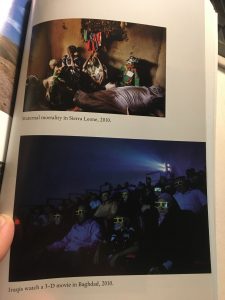When talking about the history of the Democratic Party its important to talk about not only the decision makers but the voters. The face of the Democratic Party changed rapidly and I feel through the Democratic Conventions you can tell a story of how years by years the party demographic began to change. I will integrate videos and pictures from more recent conventions and tell the stories of old ones I feel appropriate. While my paper will be much more about the history of the entire party, I find the conventions the best way to portray the changing demographics of the parties electorate.
The Presentation will start in modern day with the current face of the Democratic party, then I will go back to the beginning and work my way back up to the present. It will be given in a different order than my paper but it will go through the history in a more American people-centric ideology. It will fully explain how we got from a white-supremacist party to the party of the first African-American to how even you could be the nominee of the Democratic Party and could elevate yourself to the highest office in the land through the Democratic Party. The point of both my essay and my talk is how the party evolved and how this evolution affects the every day American.
Topic: The History of the Democratic Party
Purpose: Demonstrating a shift of how America evolved to be more democratic and representative over time, and how now anyone could become at least a nominee for President of the United States.
Introduction
Attention Strategy/
Orienting Material: Not set on which one yet but I will probably start with a speech from a Democratic Convention from 1996 to present.
Body
Main Idea – The Democratic Party is a party that represents all Americans in 21st Century America.
The current faces of the Party.
Main Idea (2) – It wasn’t always this way? Where did it start?
Jackson-Civil War. Who were the main faces of the party.
Civil War-FDR and LBJ Nominating Convention
New Deal and the Great Society
Main Idea (3) – The Party Today.
A. The Clintons and Obama and the party of Unions and Dreamers as opposed to Rich White “Plantation Owners” and the poor masses.
Conclusion
Concluding Remark – The Party has come along way since it was lead by Jackson. His political party would become something he would deplore. Yet it representes the changes in America overtime and how we became a more democratic country and how everyone can now have their voice heard in politics and not just the few and every can fight to be represented in our country.



 The New York Times plays an important role in our society and while its sales are still strong, it is entering a society where newspapers are dying. They are dying while cable news grows. You can’t tell the story of news in America without the New York Times, or its cable counterpart. Since it’s inception in 1980 CNN has grown into America’s 24 hour cable news giant. It comes under the same criticism as the New York Times yet it does the same job. It delivers the news. CNN and the New York Times open to a very interesting conversation about the nature of news, and partisanship in the news in 21st century America. CNN has a different role in society because the people are visible to criticism while writers in the timescan hide their faces behind print. The standards for news are different for both yet both need to inform their audience of the days events.
The New York Times plays an important role in our society and while its sales are still strong, it is entering a society where newspapers are dying. They are dying while cable news grows. You can’t tell the story of news in America without the New York Times, or its cable counterpart. Since it’s inception in 1980 CNN has grown into America’s 24 hour cable news giant. It comes under the same criticism as the New York Times yet it does the same job. It delivers the news. CNN and the New York Times open to a very interesting conversation about the nature of news, and partisanship in the news in 21st century America. CNN has a different role in society because the people are visible to criticism while writers in the timescan hide their faces behind print. The standards for news are different for both yet both need to inform their audience of the days events.